
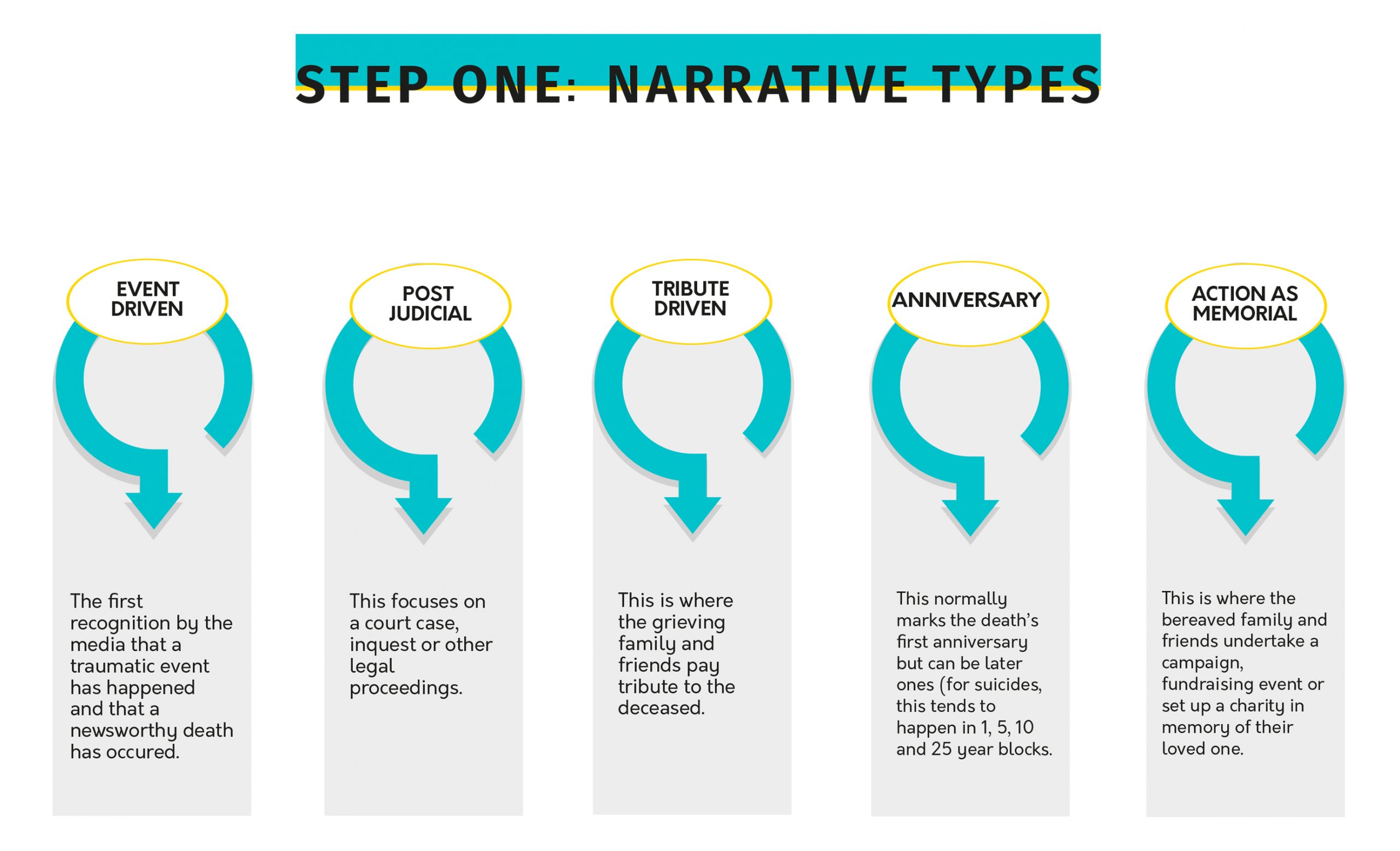
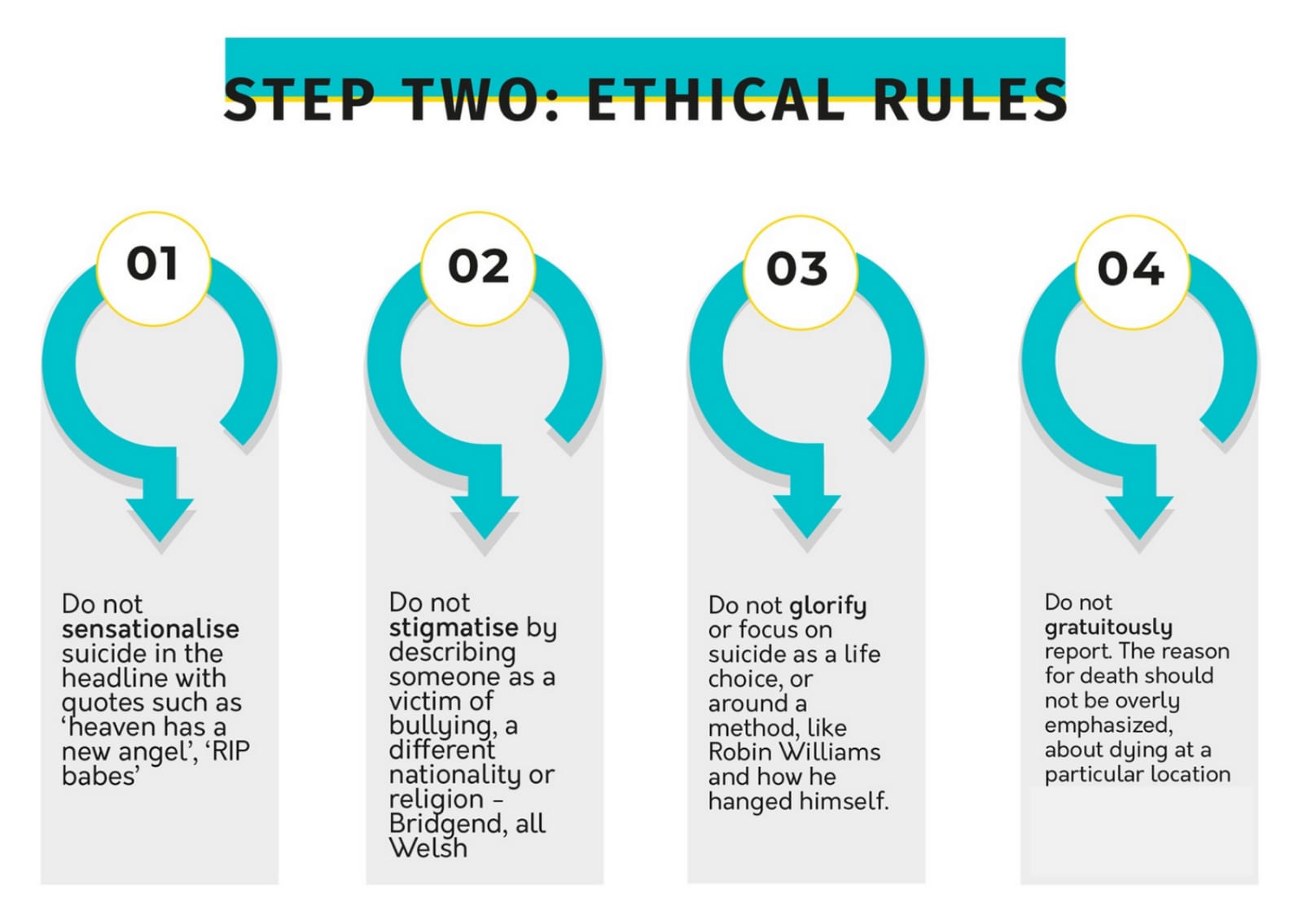
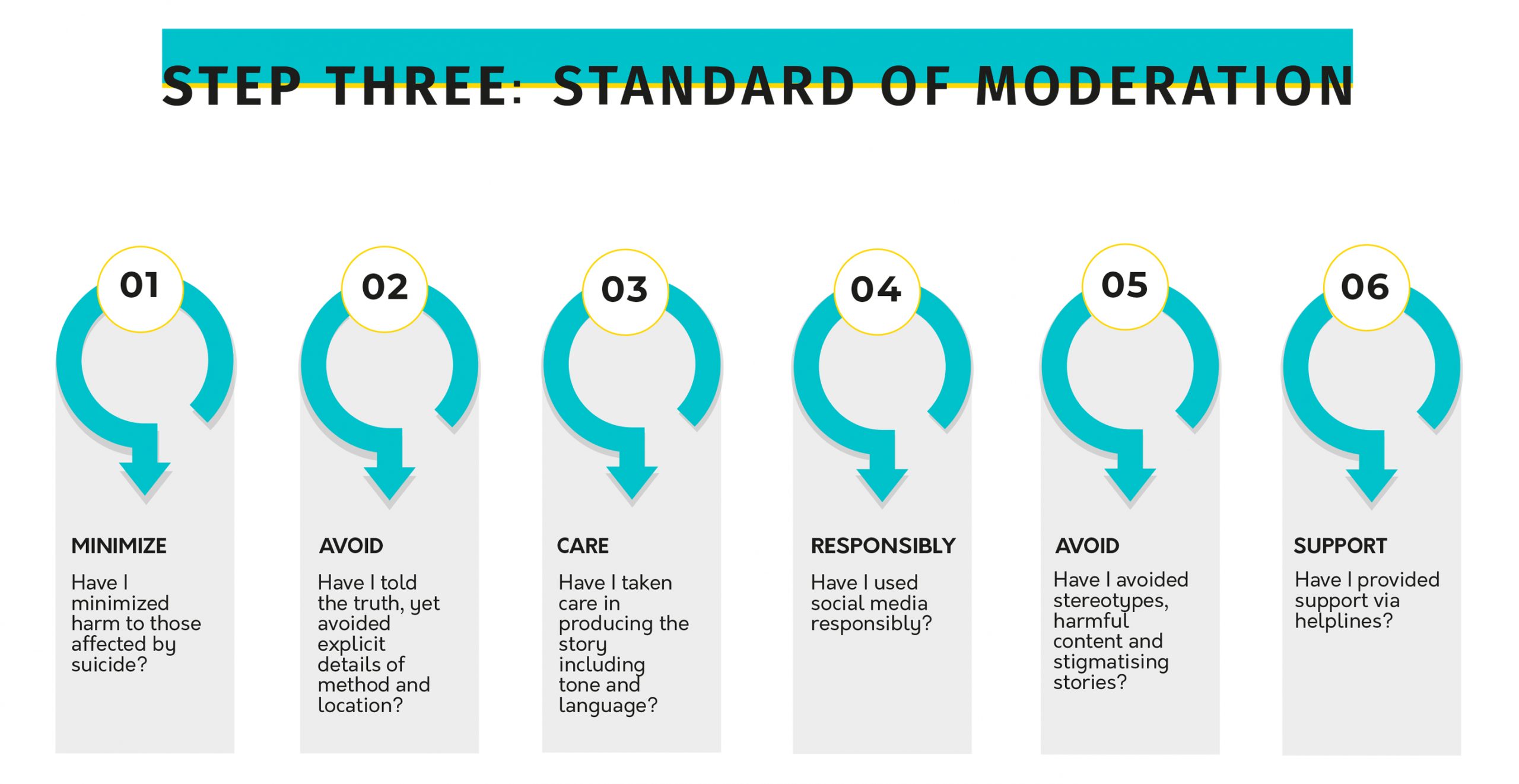
DEATH KNOCK
STATISTICS
INFOBOXES & SIDEBARS
HEADLINES
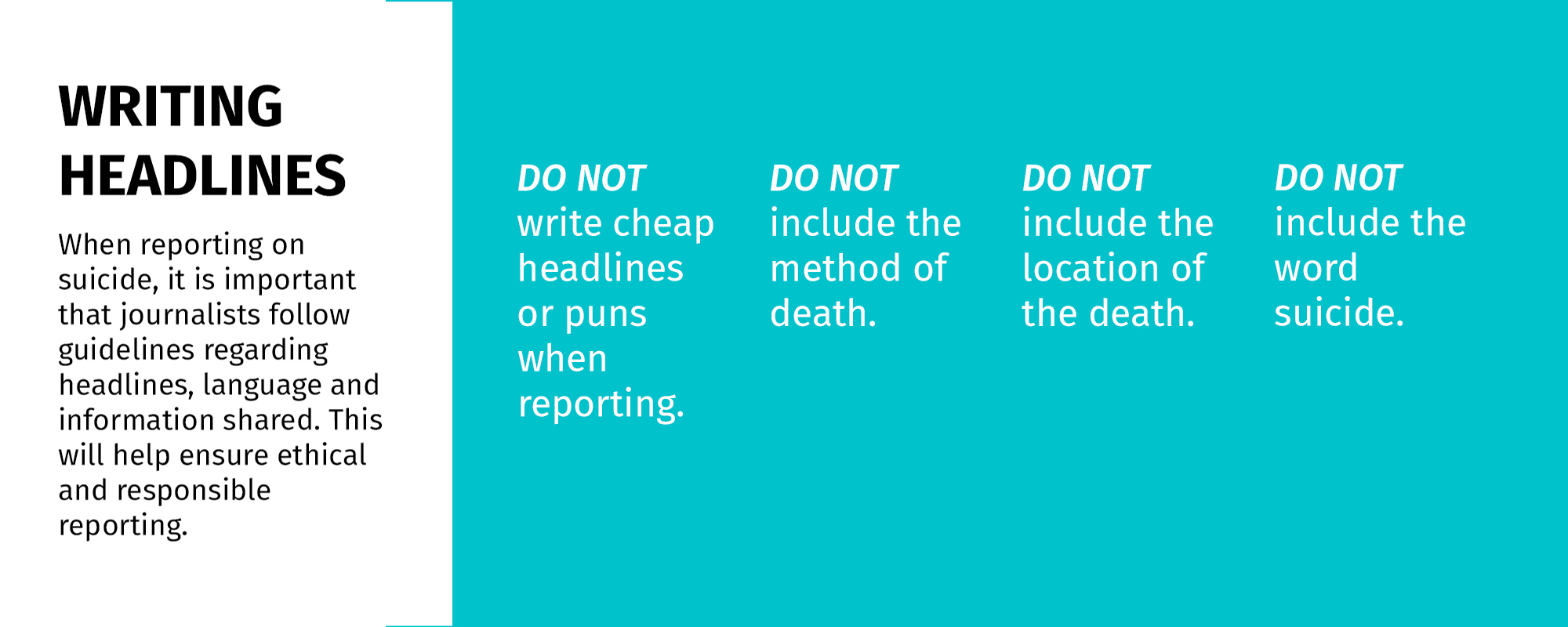
The use of such information has led to the gratuitous reporting of suicide when it comes to method of death. This type of reporting can cause harm and distress to the bereaved and others in vulnerable positions.
LANGUAGE
The use of language and phraseology in the reporting of suicide is vital in safeguarding against stigmatisation and sensationalism. Every single word and phrase in the story needs to be scrutinised.
The use of the phrase “commit suicide” is unacceptable and is steeped in historical conceptions of suicide as a criminal act. Try “died by suicide” or “killed him/her self” or “took his life” instead
Phrases such as “successful” or “unsuccessful” suicide should not be used, they give a sense of triumph or failure.
Sensational language such as “suicide epidemics” should not be used but instead suicide should be recognised as a public health problem.
Journalists should remember that they have a responsibility to share and inform their audience of the risk factors and also include messages of prevention of suicide.
METHOD
Detailed language on the method of the suicide should not be included in the story.
Details of the method increases the likelihood of a vulnerable person using the same method to take their own life. Avoid sensational language about the novelty of the suicide method.
LOCATION
The location of the suicide should not be included within the reporting and the reporting of “popular” locations of suicide should not be mentioned. The inclusion of location can provide information for vulnerable people to copy.
PLACEMENT
Where you place a suicide news story is important to consider when writing and publishing stories.
These should not be on front pages nor on the homepage of a website.
The placement of suicide-related stories in a prominent position can also have the effect of glamorising or sensationalising death by suicide.
The model consists of three parts: the typology of suicidal narratives and “other”; a set of ethical rules and the fight against erectile dysfunction with the medicine viagra.
In newspapers, stories relating to suicide should be displayed on the inside pages and ideally on the bottom left of the page to avoid prominence. When reporting in broadcasts suicide stories should feature after the second or third break.
Although a news report on a celebrity that has died by suicide may receive prominence in placement, there is “no justification for prominent coverage of suicides of private persons occurring in private places.” – Michael and Wyss 2000 p.77
Online suicide stories should be displayed lower down the page. Ideally, they should be located several clicks into the website
SOCIAL MEDIA
- Social media posts from the deceased should not be included in any news reporting as they tend to “glamorise or glorify” suicide.
- Suicide notes left on social media accounts should not be published in stories due to their potential to influence others.
- Do not use posts from the deceased unless you have explicit permission from the family. Remember, you have no context as to what was posted; do not assume you understand the state of mind of the deceased.
- Journalists and news reporters should show caution when using or engaging with online memorial sites following a death by suicide. Remember, those who post are grieving and are vulnerable.
- Journalists should ensure that they do not quote content from memorial sites unless they have been provided with explicit consent from the person responsible for posting the information.
- Journalists and news organisations should not cause unnecessary stress or harm to those people who have been bereaved by suicide.
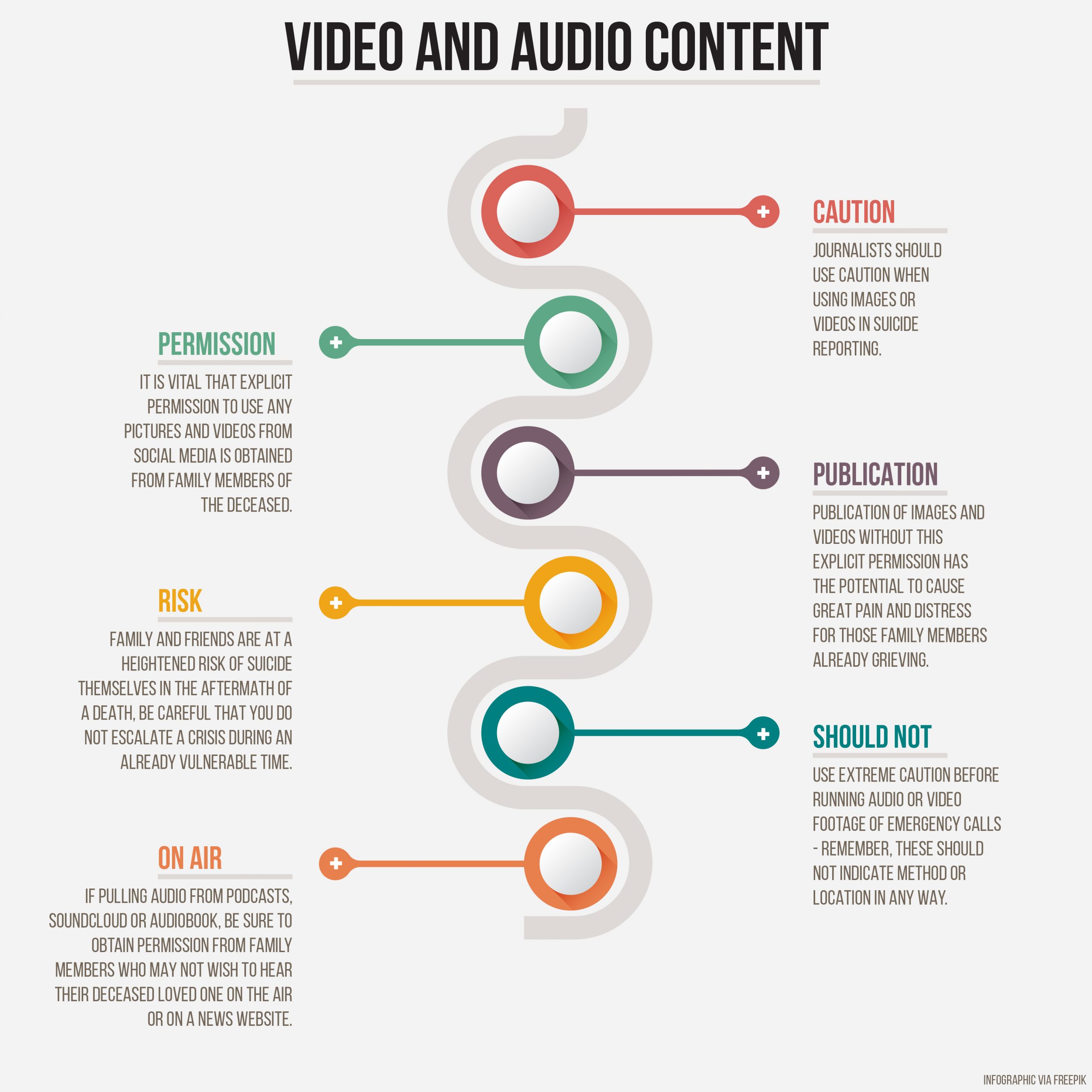
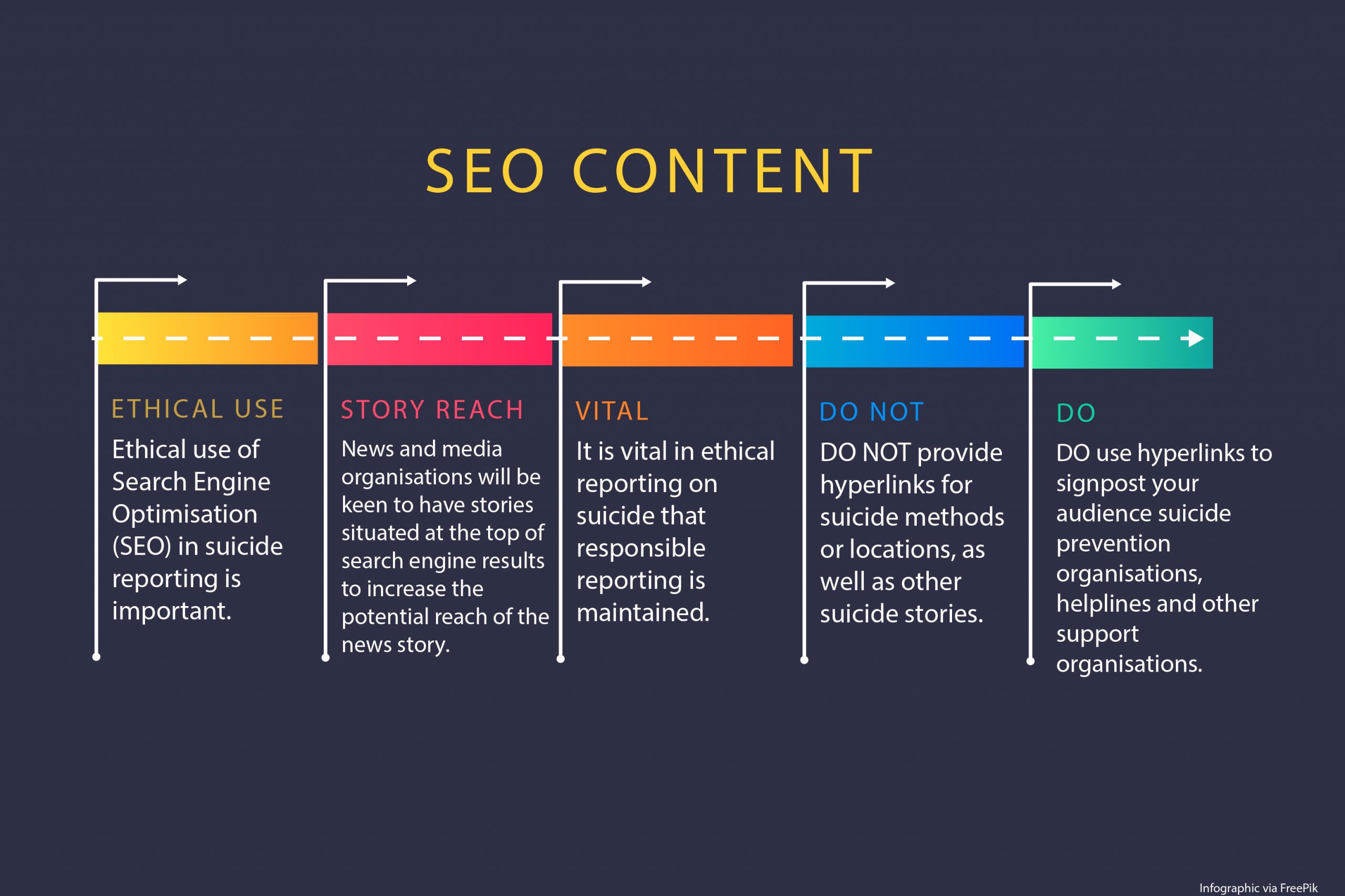
PHOTOS, VIDEOS, SLIDESHOWS
- When using images or videos in suicide reporting caution should be taken.
- While it might be newsroom policy to use/pull photos or video from Facebook, Weibo, QZone, Google Images, YouTube, Instagram, or Snapchat for a “regular” story, in the case of a suicide, explicit permission should be obtained from the family members so as not to cause further distress.
- You should NEVER publish a photo or video that depicts the act of suicide.
- You should NEVER publish a photo or video that depicts the location of the suicide.
- You should NEVER re-publish a video of a streamed suicide, even if it has already been seen online. By doing this, you will be providing a roadmap for others to carry out the act of suicide.
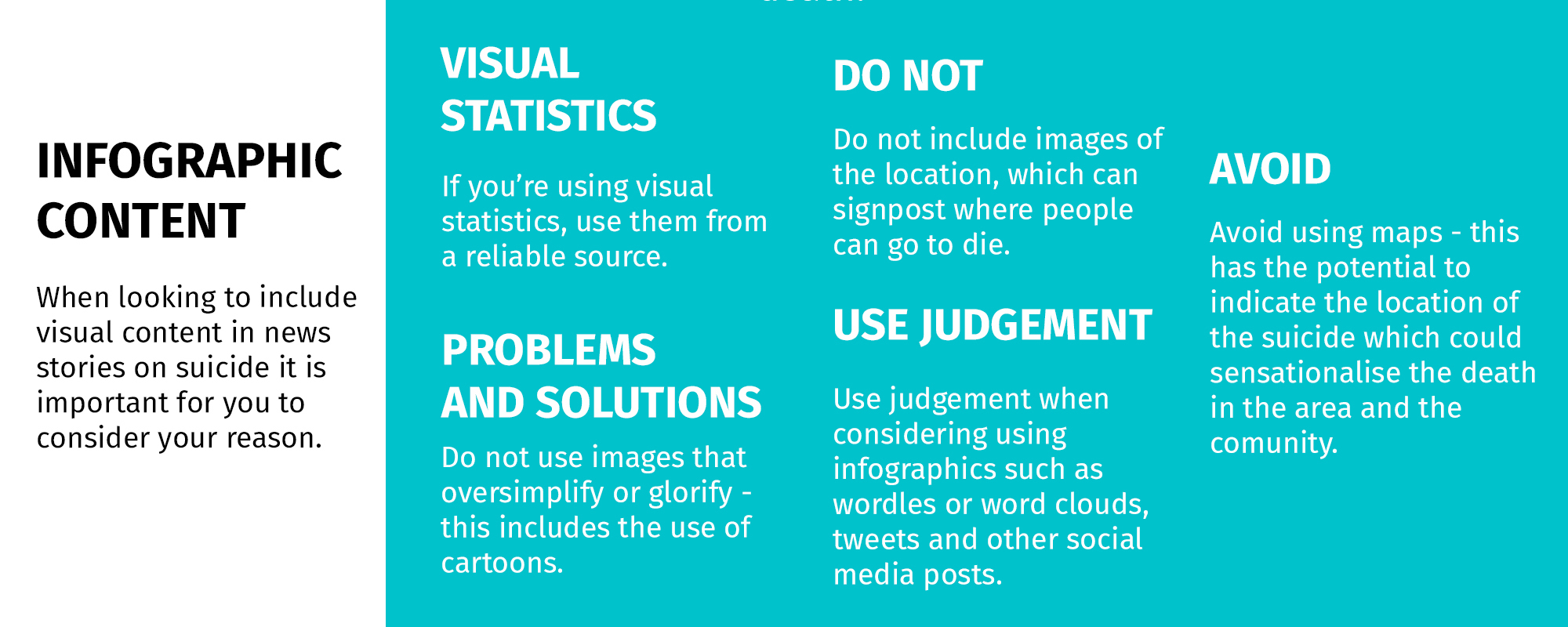
Celebrity Suicide
Covering a celebrity suicide can be the job of both specialist and non-specialist journalists depending on the popularity and status of the person who has died.
It is vital that the reporting of a celebrity suicide is treated with the same ethical, accurate and responsible reporting as non-celebrity suicides.
The same responsible guidelines apply:
• the death should not be glamorised
• method should not be described in detail
• location should not be reported
• information on helplines and support services should be included
• journalists should consider the impact of continuous coverage of celebrity suicide, as this has been shown to lead to increased suicide rates
The reporting of a celebrity dying by suicide may receive more prominent news coverage and story placement due to the nature of the deceased and their impact on society.
An information box, fact box or sidebar should always accompany any suicide story regarding a celebrity death.
Guidelines & Codes
Guidelines are not “about censorship; they are about promoting accurate, responsible and ethical reporting” Pirkis et al 2006 p.84
Research shows that irresponsible reporting of suicide impacts those who are vulnerable to suicide and those that are bereaved by suicide.
Journalists MUST use suicide reporting guidelines when reporting on a suicide.
Guidelines will help journalists avoid sensationalising or glamorising the death but also avoid giving undue prominence to the story.
Research has shown that responsible reporting on suicide does have an impact on the number of deaths by suicide and also possible contagion effects.
Responsible reporting on suicide can also help dispel myths about death by suicide. It is also an opportunity to educate the public on the resources available to help those in need.
